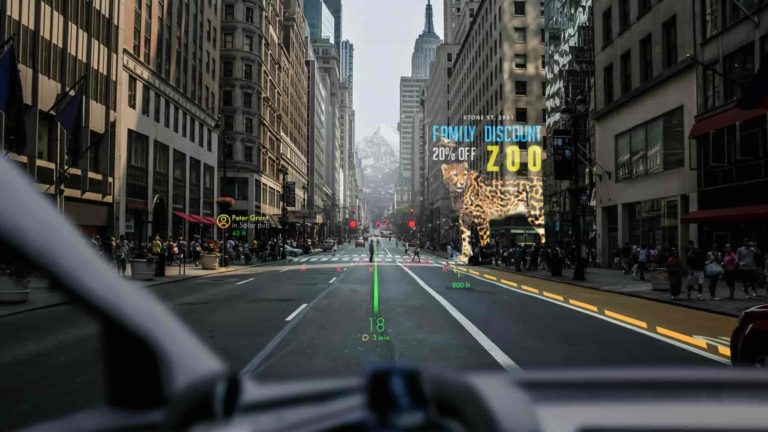
One of the key lessons that the AR (and VR) industry learned after its circa-2017 hype cycle is that’s it’s generally not a good idea to set overblown expectations. Many companies and investors got burned from believing that AR’s revolutionary impact was imminent.
Consumers have also been turned off to some degree. That’s not because AR isn’t compelling, but because it’s been somewhat disappointing — at least relative to its hyped promises. Magic Leap One is one example of this sequence playing out, and the company has paid for it.
But despite the market trough (or a pendulum-swing as we’ve put it), AR isn’t without its merits. It’s just taking longer than first expected to develop in terms of underlying capabilities and cultural acclimation. Notably, the technology is moving at the pace it was always meant to.
More importantly, AR is achieving respectable wins along the way. While AR works towards its headworn endpoints, mobile AR — though not the optimal form factor — is gaining scale, traction and revenue today. The latter is seen in AR advertising, gaming and camera commerce.
Realistic Timeline
With that backdrop, what’s the timeline for ubiquity in AR’s fully-actualized form? By that, we mean all-day AR glasses with stylistic viability and wearability. That reality isn’t present today because current technology can’t achieve graphical intensity and wearability.
As they’ve learned these lessons firsthand, we’ve begun to notice a common theme in the public statements of AR and VR leaders lately. They’ve realized that the smart play is to be honest with themselves and consumers about the realistic timeline for AR’s lifecycle.
The two biggest examples recently are Mark Zuckerberg and Evan Speigel. Both lead companies that are at different stages of AR glasses research and development. And both have recently explicated a similar timeline of about ten years for AR glasses’ actualization.
So to further underscore that trend, we’ve collected the latest evidence in direct quotes from Zuckerberg and Speigel. Here they are (emphasis ours)
Mark Zuckerberg on the Information’s Podcast.
When we got phones, we didn’t get rid of our computers. We maybe just shifted some of our time towards phones. My guess is that we’ll have phones for a while too, so that part of what we do will always be important. But I think over time, [AR] will become the platform for more and more people, and I think that there’s a lot of awesome stuff that comes from that. If you can deliver a computing platform that’s fundamentally more human and about creating natural interactions between people, that’s sort of the dream that we’ve been chasing for a long time. If we can build that — and I do think it will be in a decade — a lot of the things we’ve talked about today should be delivered and at scale. I think that that will be very exciting. A lot of this stuff will start to come about in the 2020s. It may not really reach the full scale until 2030.
Evan Speigel at TechCrunch Disrupt
Spectacles represent a long-term investment in augmented reality hardware. […] So I think it’ll be roughly ten years before there’s a consumer product with a display that could be really widely adopted. But in the meantime, we’ve built a relationship with our community and all these people who love building [AR] experiences and we’re sort of working our way towards that future, rather than go in a hole or in an R&D center, and try to make something that people like, then show them ten years later. We’ve sort of created a relationship with our community where we build that future together.
Managing Expectations
To circle back to an earlier point, though the road to AR glasses is long and winding, there are meaningful wins along the way. The above two tech leaders helm companies that are achieving such milestones perhaps more than anyone, including usage and revenue targets.
These short-term wins are a key enabler for their ability to speak honestly about the long term. They can temper expectations for AR glasses while armed with the confidence that the spatial computing work they’re doing today is producing tangible and financial results.
In other words, Mobile AR is a worthwhile stepping stone to AR glasses. For that matter, VR is here today and is likewise an AR glasses accelerant. Or, to borrow a quote from Endeavor VR CEO: “The metaverse is as much the journey as the destination.”
This framing makes AR’s 2030 deferment easier to swallow. And the sooner we all come to terms with that — including generalist tech articles that still characterize AR glasses’ world-changing impendence — the more we’ll set up AR to succeed through realistic expectations.

